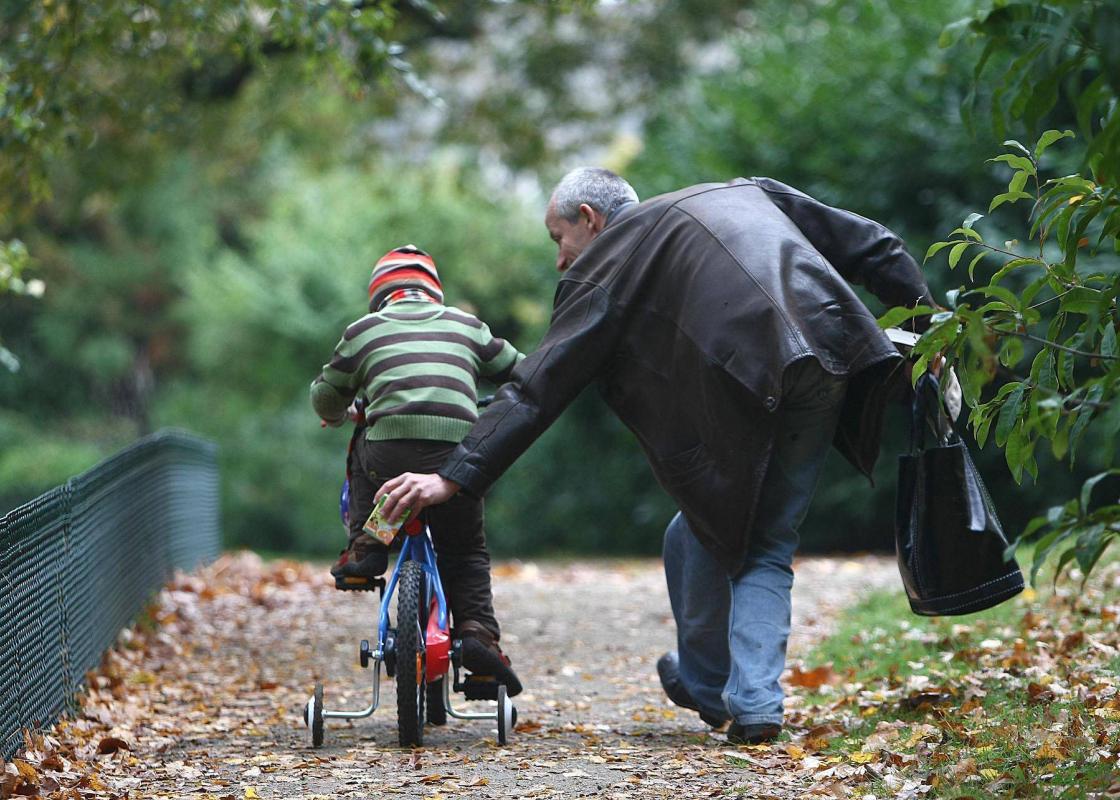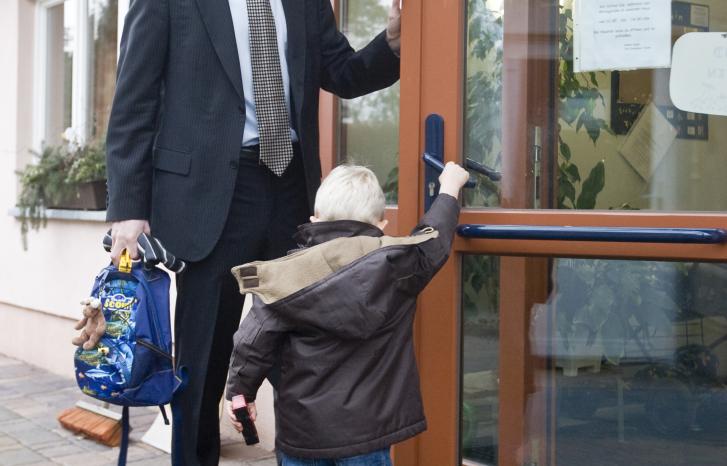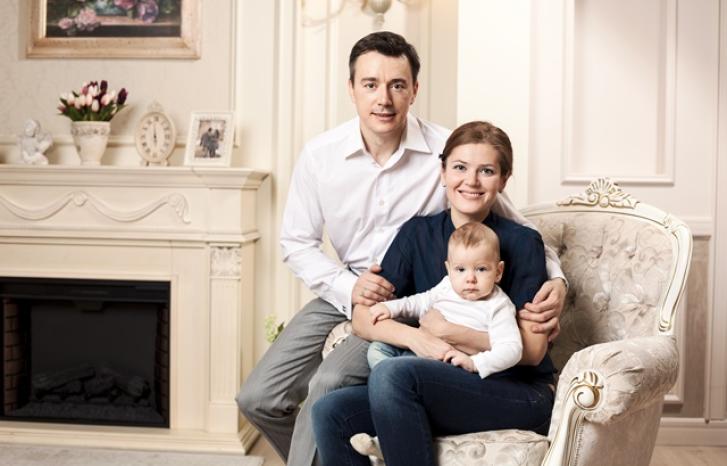In 1969, sociologist Erik Grønseth launched an action research project in Norway that aimed to promote gender equality and more democratic relations within the family. Spouses shared the responsibility of staying at home with the children while working part-time. For example, they worked every other day, every other week or half a week each, and the rest of the time they stayed at home with the children. The project, entitled Norwegian Work-sharing Couples, began in the early 1970s and concluded in 1975.
Thirty years later, researcher Margunn Bjørnholt has conducted a follow-up study of this project. She interviewed 14 of the original 16 couples about their perceptions of the experiment and its significance for their careers and family life through the years.
“During the interviews, almost everyone said that the experiment had a very positive impact on them as a couple. They thought the arrangement was fair; the wife got the opportunity to work outside the home, while the husband gained competency and insight into what happens at home. This was also important for the couples’ relationship,” explains Bjørnholt.
One of the men she interviewed describes it like this:
“It’s very fundamental that both have responsibility at home […] this creates a basis for a shared experience and a shared understanding which make living together much simpler.”
The study from the 1970s showed that the couples had achieved a high level of gender equality at home and that the families experienced less stress. These were also important factors in Bjørnholt’s follow-up study 30 years later.
Less stress for the entire family
“The couples describe the period as positive for the entire family. They had a lower stress level and they report that they were able to create a calm atmosphere within the family. They remembered the period with small children as one where they had enough time.”
Some of the couples thought that they were healthier than others because they experienced less stress. One of the informants says:
“One winter there was this terrible flu, but all of us stayed healthy, and (we wondered) whether this had to do with our calmer lifestyle and the lack of stress for us and the children.”
“Overall many of the couples summed up their experience from that period by saying it helped to enhance their quality of life and well-being,” says Bjørnholt.
She adds that all the participants had to change their financial priorities, for example by abstaining from buying a car or a cabin, in order to make the arrangement work. By the same token, at that time it was very difficult to get a place in a day-care centre, so it was more common in Norway for families with small children to live on one income than it is now.
Continued to work part-time
“One surprising finding of this follow-up study was that so many of the couples continued to work part-time for several years after the project concluded.”
She found that nine of the 14 couples continued to work part-time and share the responsibilities at home for more than six years. One couple maintained the arrangement for 30 years.
Another finding of Bjørnholt’s follow-up study is that it was the men in these families who often took the initiative to organize the work-sharing arrangement and to participate in Grønseth’s project.
“It was interesting that almost all of these men had done housework as children. Several of them had to take responsibility at home at an early age because one of the parents was sick or absent. A large percentage had mothers who both worked outside the home and had full responsibility for the house and children. They viewed women as equal and strong. Many of them gave this as the reason why they decided to take part in the work-sharing arrangement.”
Care-giving regarded as a leadership qualification
“Many studies show that working part-time can have a negative impact on a person’s career development, but none of these men were ‘punished’ for working part-time. Even though they had part-time positions early in their careers, they had good career development. Half of the men were employed in managerial positions, and those who did not have careers at the managerial level made a conscious choice to prioritize other values, including their leisure time,” says Bjørnholt.
The men who took on managerial positions began to work full-time.

“For these men it has not been a drawback to work part-time, even though at that time it was very unusual for both men and women to have part-time positions. On the contrary, several of the men reported that their care-giving experience was viewed as highly relevant to managerial jobs. They stood out from the crowd in a positive way. This was apparent in the recruitment process and in the feedback they received on the job.”
The women in the project often had a different career cycle. They continued their further education at a later stage, so the impact of working part-time was less clear cut for this group, according to Bjørnholt. However, one of the women who was employed in a managerial position continued to work part-time, 80 percent, also in her first year as a manager.
Family reduced to a residual category
“A key objective of the gender equality movement and state feminism was to get women out of the home and into the labour market, and this was also an important part of Grønseth’s project. At the same time, though, the project sought to compensate for this by having the men contribute more at home.”
Time-use surveys of the general population show that this has not happened: More women work outside the home and they have dramatically reduced the amount of time they spend on housework since the 1970s. Men spend more time on housework, but this is by no means proportionate to the reduction by women. So although the studies show a more equal distribution of housework, this is mainly because women do less housework than before. This means that parents spend more time at work and relatively less time with their families than they used to, according to Bjørnholt.
“The thinking behind Grønseth’s project was that to achieve gender equality in the family, not only did family life have to change, but working life had to change as well,” Bjørnholt explains.
“Much of the current debate in Norway about gender equality has been reduced to the topic of paternity leave – just a few weeks in an infant’s life – rather than dealing with employers’ adaptations for families with small children. Maybe it’s time to target gender-equality policy towards working life rather than only focusing on the family.”
Families with small children in which both the woman and man are employed full-time is the overall political goal, but in reality these families are still in the minority, and it is usually the woman who works part-time during this period. Bjørnholt points out that gender inequality is pervasive in working life – in terms of wages, work conditions, positions and power.
“If we can make working life more gender equal and better adapted to families with small children, we might see more gender equality at home as well. In my opinion, we expect far too much of the paternity leave scheme,” she says.
“The project on work-sharing was radical in the sense that it was premised on both parties having joint responsibility for both the home and income-generating work. The family was not reduced to a residual category that the couple barely had time for in the evening after both of them had spent all day at work.”
Translated by Connie Stultz
Sociologist Margunn Bjørnholt has conducted a follow-up study of the couples who participated in the Norwegian Work-sharing Project from the first half of the 1970s. She has also conducted a study of intergenerational transfer in cooperation with Professor Tone Schou Wetlesen of the Department of Sociology and Human Geography at the University of Oslo.
This study examines intergenerational transfer between fathers and sons from the Norwegian Work-sharing Project, focusing in particular on gender equality within the family, the balance between work and family life, the relationship between father and son, career development and masculinity.
The study was funded by the Research Council of Norway’s Independent Projects in the Social Sciences (FriSam). The first part of the project was carried out with funding from the (then) Norwegian Ministry of Children and Family Affairs and the Department of Sociology and Human Geography at the University of Oslo.
Selected publications from the project:
Bjørnholt, Margunn (2010). “Part-Time Work and the Career and Life Choices of the Men from the Work-Sharing Couples Study.” Equality, Diversity and Inclusion, 29(6)
Bjørnholt, Margunn (2009). “Fathers and sons – gender socialization and intergenerational transmission revisited.” NORMA – Nordic Journal for Masculinity Studies, 4(1), 83-102.
Bjørnholt, Margunn (2009). Norwegian Work-Sharing Couples Project 30 years later. Revisiting an experimental research project for gender equality in the family.” Equal Opportunities International, 28(4), 304-323
Forthcoming publications:
Bjørnholt, Margunn (forthcoming 2011). “How Men Became the Local Agents of Change towards Gender Equality”. Journal of Gender Studies, 20(1).
Bjørnholt, Margunn (forthcoming 2010). “Like Father, Like Son? The Transmission of Values, Family Practices and Work-Family Adaptations to Sons of Work-Sharing Men”. Fathering: A Journal of Theory, Research and Practice about Men as Fathers, 8(3)



